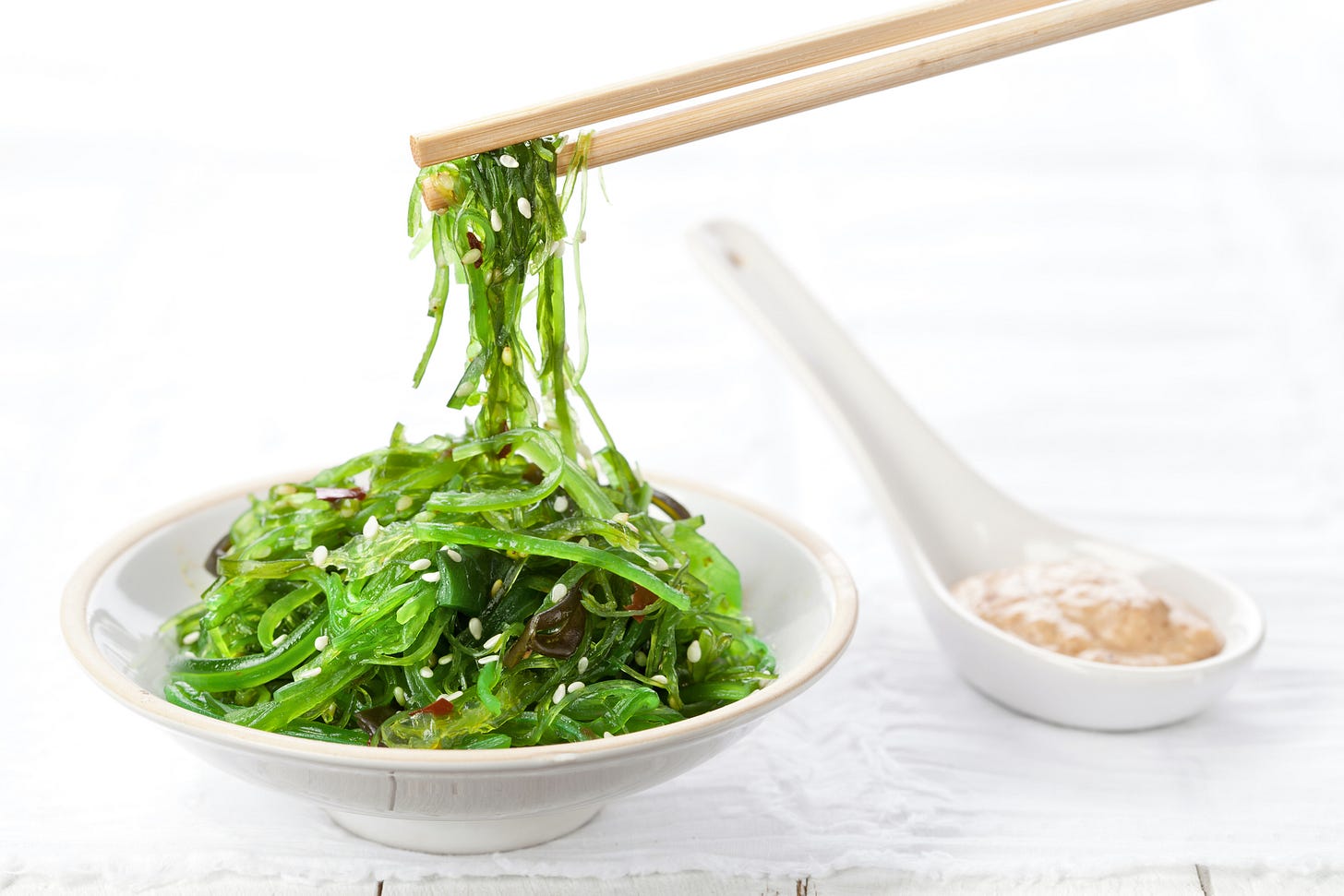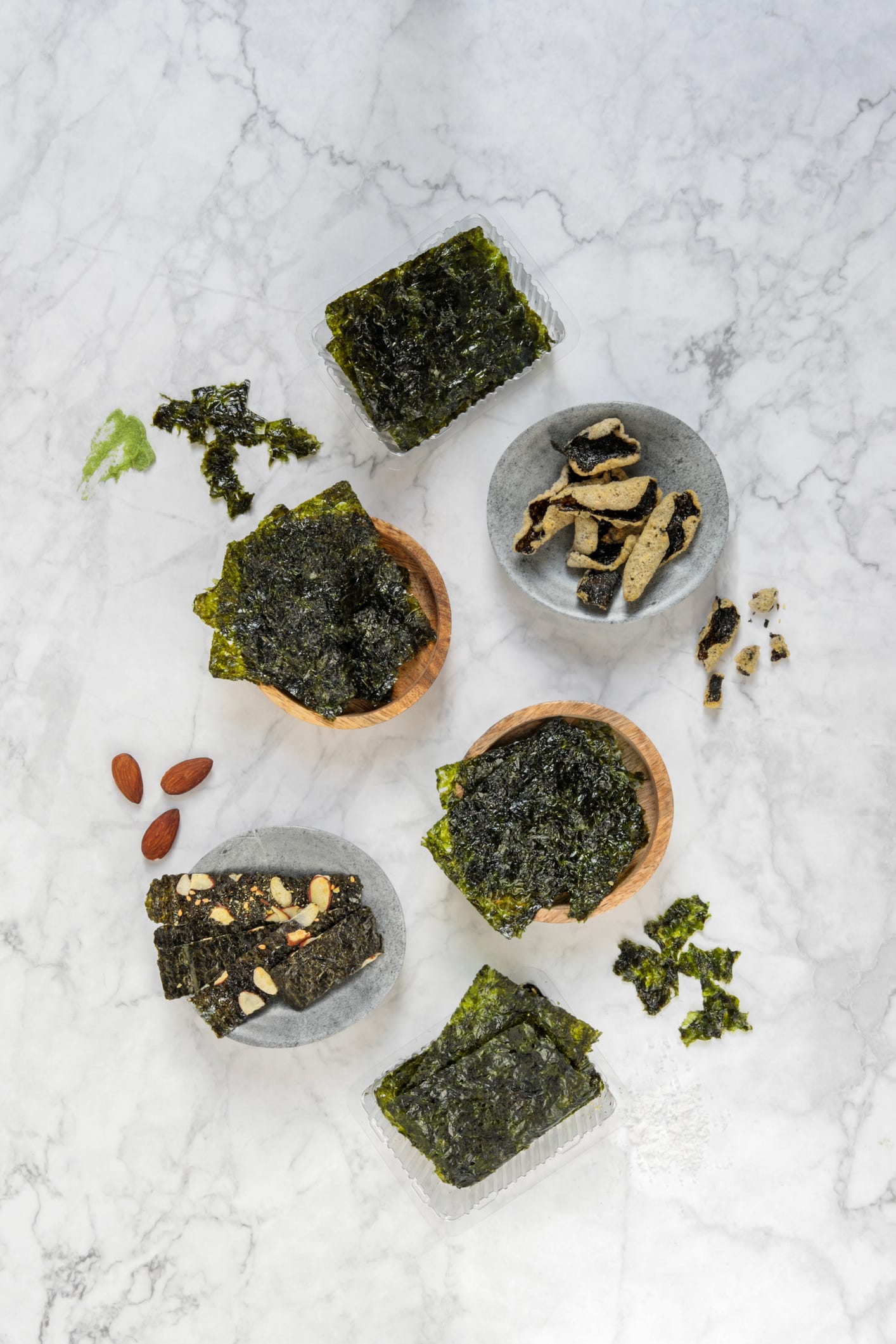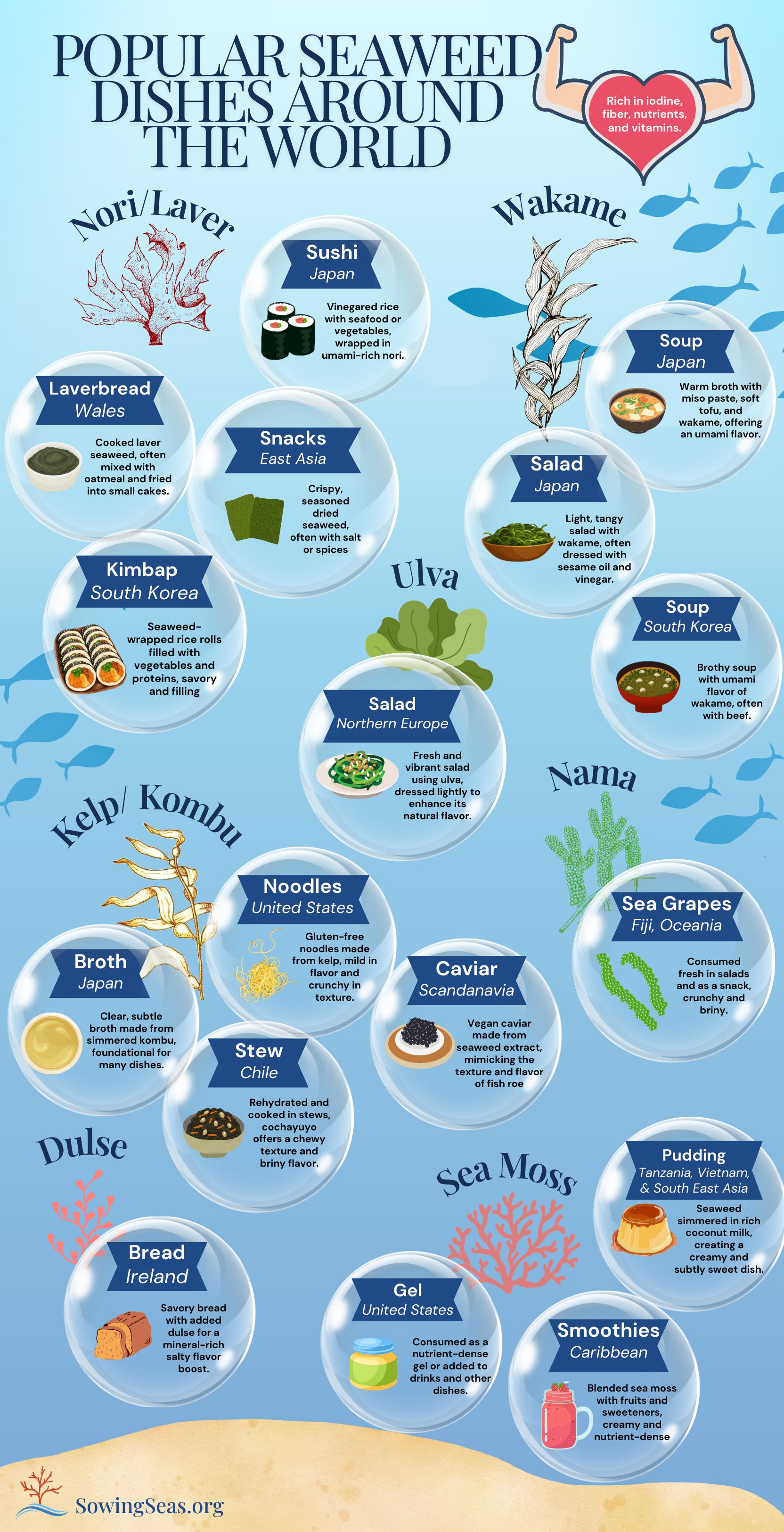Seaweed: The Ocean’s Superfood
Seaweed is packed with essential nutrients including vitamins, minerals, protein, fiber, and antioxidants.
“Is seaweed good for you?”
A few weeks ago, I was chatting with my cousin about all the amazing ways seaweed can help mitigate climate change. She nodded politely before following up with a question about the health benefits of seaweed.
This is often the first question I get asked about my work with seaweed, and I surprised myself with how unprepared I was to answer my cousin’s simple question.
So this week, I’m making sure we’ll all be ready to talk about the many health benefits of seaweed at our next cocktail party. Monique, this one's for you!
“Is seaweed good for you?”
Yes! In fact, it is one of the most nutrient-dense superfoods on the planet.
Seaweed is packed with essential nutrients including vitamins (A, C, D, E, K), minerals (iodine, calcium, magnesium, potassium, and iron), protein, fiber, and antioxidants.
A large prospective study of Japanese men and women showed that diets including seaweed were associated with a decreased risk of cardiovascular disease and deaths from any disease.
That’s right. Fewer deaths from any health-related cause.
What even is seaweed?
Ok, Beck, so you’re saying if I eat more sushi, it will help me live longer? Well, yes and… As delicious as sushi is, it only represents one type of seaweed.
In fact, seaweed is a collective term for countless species for marine plants and algae. Approximately 12,000 species of seaweed have been recorded, and there are likely more to be discovered. As of 2024, it is estimated that only about 5% of the ocean has been explored and charted by humans! (This fun fact deserves an entire blog post on its own, but I digress.)
All these types of seaweeds are grouped into three categories: red, brown, and green. Each group varies significantly in terms of habitat, appearance, and uses. Brown seaweeds are often found in cold, nutrient-rich waters and can grow so large that they form underwater forests. There are over 7,000 types of red seaweeds, commonly found in warmer, tropical waters. Green seaweeds are typically found in intertidal zones where they receive plenty of sunlight.
Similar to how land plants absorb water and nutrients from the soil, seaweed takes in minerals from the seawater around it. This means it’s packed with even more nutrients than land plants can soak up from the soil.
Overall Health Benefits
So what are some of these nutrients? Most seaweeds include the following health perks:
Iodine
Seaweed is high in iodine content, which is crucial for thyroid function.
An unhealthy thyroid can lead to all sorts of symptoms, from fatigue to depression to trouble with weight management.
Iodine produces thyroid hormones, which play a key role in regulating metabolism, growth, and development. For instance, a single serving of dried nori contains 232 micrograms of iodine, more than enough to meet the daily recommended intake for adults.
Fiber
Seaweed is low in calories because it's made up almost entirely of fiber and water. The water content of seaweed typically ranges from 80-90% of its total weight.
Seaweed is a good source of various fibers, including polysaccharides, agar, alginate, carrageenan, and cellulose. According to the Harvard School of Public Health, fibers can help prevent constipation, control blood sugars, and promote satiety and weight loss.
These dietary fibers are commonly used by the food industry as a thickening agent because they help improve the texture, stability, and shelf life of a wide variety of processed foods. This means that seaweed is frequently found in grocery products like ice cream, yogurt, cheese, bread, pastries, soups, and salad dressings, as well as beverages like fruit juices and plant-based milks.
You’re likely eating seaweed every single day already and didn’t even know it. Even your favorite brand of toothpaste most likely contains these seaweed polysaccharides!
Omega-3 fatty acids
Omega-3 fatty acids became a popular health trend when supplements and fish oils gained momentum in the 1990s and early 2000s.
Scientific studies led to increased public awareness of the health benefits of omega-3 fatty acids, including improved heart health, brain function, and reduced inflammation. They are essential to the body and found in many cell membranes, including the brain and eyes.
Instead of consuming fish oil for omega-3 fatty acids, why don’t we head straight to the source? Seaweed. As U.S. ocean farmer, Bren Smith, would say, “Eat Like a Fish!”
Protein
In all honesty, seaweed is not a major source of dietary protein, especially because it tends to be eaten in small quantities. Interestingly, I learned that not all proteins are created equal. For example, corn contains some protein too, but it lacks essential amino acids. Seaweed produces a high-quality protein containing all nine essential amino acids.
In a review of 100 scientific studies, the American Chemical Society found that some seaweed proteins work just like the bioactive peptides in milk products to reduce blood pressure.
Seaweeds are a “rich but neglected alternative source for heart-healthy foods,” the study concluded.
Variety in Nutritional Value
So far, I’ve discussed the health benefits that are common to most seaweeds. However, since seaweed species are grown in different oceanic environments all around the world, their nutritional values can vary significantly.
I pulled together this chart of popular types of seaweeds and their average nutritional content:
More Research & Consumer Protections Standards Necessary
Although I’m clearly a huge proponent of eating seaweed, I would be remiss to ignore the potential concerns some folks have about seaweed consumption.
Research is still in its early stages, with mostly laboratory and animal studies in addition to small randomized trials. Larger human trials are needed to validate the many health-related claims people are making about seaweed. This article only contains information backed by peer-reviewed studies, but the research is still scarce and misinformation is rampant.
So what’s the problem?
Seaweed has the extraordinary capacity to absorb trace minerals, metals, and other elements from seawater and accumulate them in its tissues. This makes seaweed nutritious, but it also means that it can absorb undesirable elements such as lead, cadmium, and arsenic.
Research from the European Food Safety Authority (EFSA) – which is a much more rigorous regulating body than the U.S. Food & Drug Administration (FDA) – assessed dietary exposure to these metals through seaweed consumption and suggested that while the levels found were generally within safe limits, there is a need for continued monitoring and regulation.
Seaweed supplements are the most likely products to contain these heavy metals, as they are not reviewed by the U.S. FDA for safety or effectiveness before they are sold to consumers. This is why it is always safer to opt for specific food and drink products that are regulated as opposed to supplements like pills and gummies.
This goes for the entire supplement industry, not just seaweed! ConsumerLab.com does an excellent job independently testing major brands to help consumers find the best quality health and nutrition products.
Ok, be wary of supplements, but what about other types of seaweed products?
In my review of the available research, the potential exposure to these metals by consuming seaweed is so low that it is insignificant. Plants also can absorb heavy metals like lead, arsenic, and cadmium from contaminated soils.
At the end of the day, it’s less about the seaweed and more about the cultivation.
As a consumer, the most important thing to know is where your seaweed comes from. The clear waters of marine-protected areas are a stark contrast to the contaminated coastlines of polluted cities.
To avoid contaminated seaweeds, check your seaweed products for certifications from reputable organizations like the Marine Stewardship Council (MSC) or the Aquaculture Stewardship Council (ASC). These regulating bodies jointly created the ASC-MSC Seaweed Standard for environmentally sustainable and socially responsible seaweed production.
Should you eat seaweed products? I agree with the folks over at Maine Coast Sea Vegetables.
“Ultimately the decision is up to you,” their website states. “Our approach has always been to provide the best products and information we can, and allow consumers to make the choices that are right for them.”
For more detailed and specific information, you can refer to the studies and reports from EFSA and other scientific journals: Spectroscopy Online, European Food Safety Authority, PLOS.
Seaweed Dishes from Around the World
Seaweed has been consumed globally by coastal populations for centuries and is a staple of East Asian and Pacific cuisines.
The term “seaweed snack” practically didn't exist in the American vernacular before 2011, at least according to this graph from Google Trends.
Seaweed's popularity in the U.S. is growing and continues to grow. New food products and mainstreaming traditional Asian dishes has contributed to this spike in interest.
It’s even entered the beer market. Belfast, Maine-based Marshall Wharf Brewing Co. has a seaweed-infused craft beer!
Here are some of the most common ways people from around the world enjoy eating seaweed:
Popular Seaweed Dishes
And finally, here are a few of my favorite U.S.-based companies where you can source quality seaweed products:
What are some seaweed products you’ve tried and loved? Please let me know! I hope this article has encouraged you to #EatMoreSeaweed.
Happy munching!
-That Seaweed Girl














Thanks, Beck! Such great information! Really appreciate both the nutrition discussion AND the discussion about heavy metals absorbtion. The links to more info are great! #eatmoreseaweed...
Interesting read! Love that you followed up on a question and I definitely want to add seaweed to my diet! Thanks!